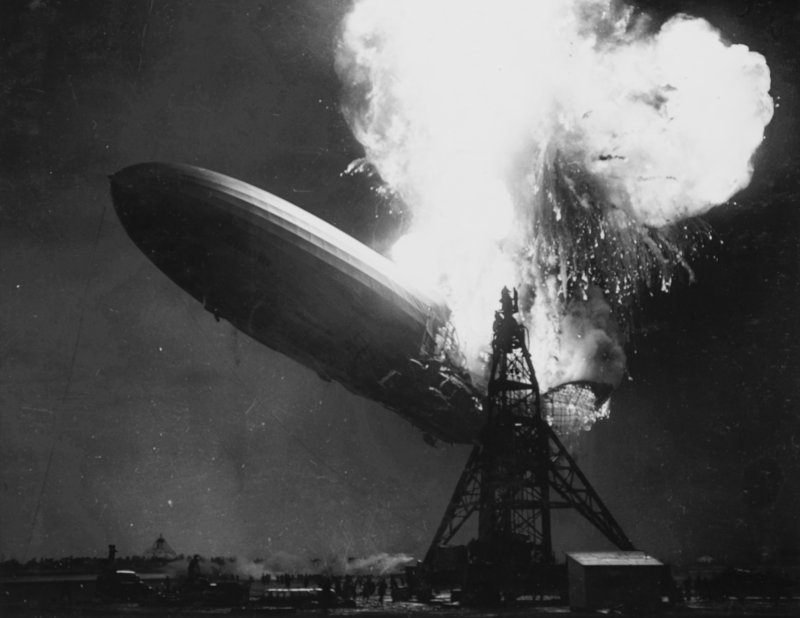The largest manmade object ever to fly, the 800-foot airship Hindenburg erupts in a fireball at Lakehurst, N.J., on its arrival from Europe on May 6, 1937. Static electricity ignited the airship's flammable fabric skin, and 37 seconds later the airship crashed to the ground, killing 35 of its 97 passengers and crew. This spectacle ended the era of the passenger airship. Photo by Sam Shere/INS/UPI
LAKEHURST, N.J., May 6, 1937 (UP) - Harry A. Bruno, press relations representative of the American Zeppelin Transport Company, tonight gave a vivid account of the blast which destroyed the huge dirigible Hindenburg.
"Storm conditions were prevailing about the field and there was some lightning and static," he said. "In my opinion there were one or two causes for the disaster. One of the causes may have been a static spark that flew up one of the two landing ropes at the time when the ship possibly was valving gasoline.
"The second, and perhaps the more logical one, is that both rear engines were throttled down and the explosion may have been caused by a flying spark.
"I was standing directly under the nose of the ship with William von Meister, vice-president of the Zeppelin company.
"The nose of the ship was about seventy-five feet in the air and the tall was about eighty-five or ninety feet in the air."
"Suddenly there was a terrific explosion under the tail flippers.
"Several passengers were leaning out of the cable windows as the ground crew was preparing to dock the ship.
"The flames shot through the ship in a fraction of a second.
"I saw two passengers hurled out of the window to the ground.
"Von Meister and I turned and ran as fast as we could to get out from under the big bulk that was enveloping in flame and was descending on us.
"The ship struck the ground with a terrible crash and with many loud explosions.
"We ran about 200 feet from the ship. Then we started back toward it and I saw Capt. Lehman picking himself up from the ground.
"He began walking over toward us. He was very badly burned.
"He kept repeating:
'I don't understand it. I don't understand it.'
"He was rushed to the hospital by automobile."















